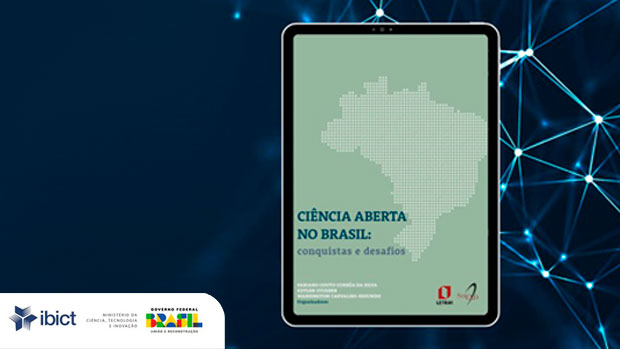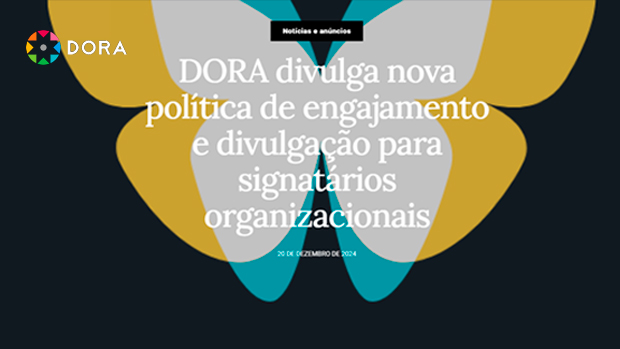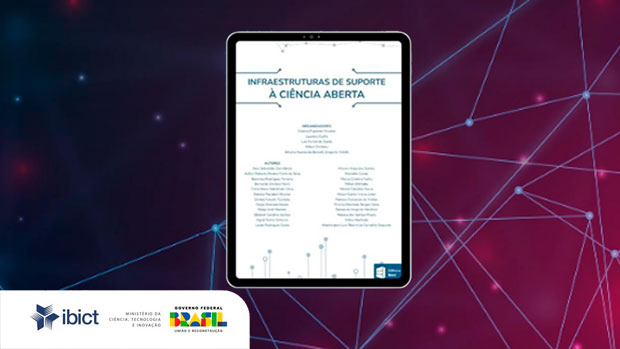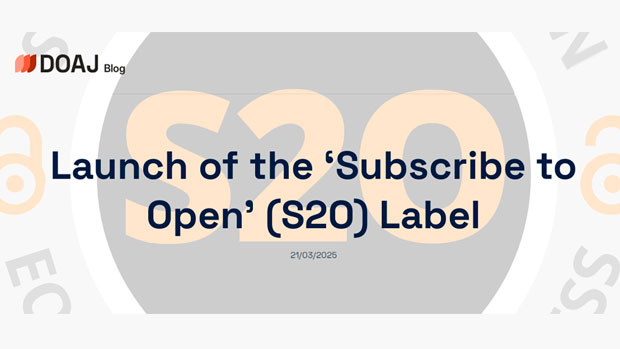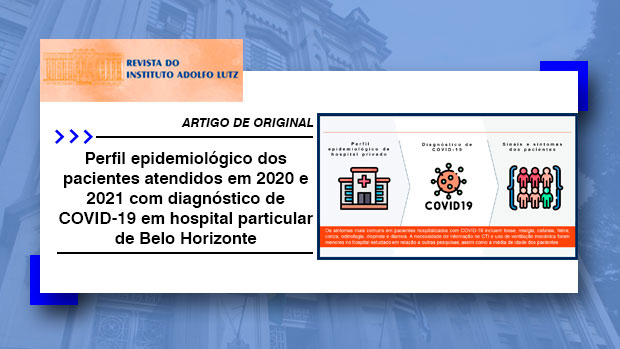
The Portal of Scientific Journals and Open Science

The Portal of Scientific Journals and Open Science
Dr. Lilian Nassi-Calò[1]
The initiative of the São Paulo State Health Secretariat to establish a Portal of Scientific Journals is of great importance to provide visibility to the journals of the institutions that integrate the Information and Knowledge Network Virtual Health Library (RIC VHL) and the research they publish.
The five journals have particular characteristics that define and individualize them, but they share the theme of Public Health and Epidemiology in common, which gives this small but valuable collection a singular importance in the health scenario in Brazil and in the Unified Health System (SUS).
Created 80 years ago or more, as the Revista do Instituto Adolpho Lutz (from the Institute of the same name) and Hansenologia Internationalis (Instituto Lauro de Souza Lima), or 16 years ago, as Cadernos de História da Ciência (Instituto Butantan), the journals are indexed in regional and international databases and are recognized for the quality of the articles they publish. They are all open access journals and are exempt from publication fees (article processing charge).
In my view, the Portal’s journals would greatly benefit from adopting Open Science practices. The first step has already been taken, the adoption of diamond open access (APC free open access journal).
It could be said that there are three pillars of open science: open access, open peer review and open research data.
It is not the point to start a discussion about the traditional formats of peer review – single blind and double blind – and the reasons that led the scientific community to rethink this model and propose alternative forms [1,2]. The fact is that innovative models of peer review have been increasingly adopted for the sake of greater speed, efficiency, transparency, responsibility and due academic credit to the reviewers who carry out this detailed and specialized work, which, until now, has been little recognized.
Open peer review is a term that includes numerous ways to “open” this fundamental stage of scholarly communication, whether by revealing the identity of the reviewers, or by carrying out post-publication review, opening the content of the reviews, or even combinations of these methods, as it suits editors, reviewers and authors[3]. Opening the process also allows for the generation of reports [4] on peer review, which until then was not possible due to confidentiality, and for adjusting disparities.
Changing paradigms is not trivial, and it takes time and energy. How editors, authors and reviewers will react to changes in peer review in a decades-old journal is difficult to predict and realize. But it is possible to take it one step at a time. A first step can be taken by journals when considering accepting submission of articles posted as preprints. Preprints are complete articles deposited on servers prior to peer review, to communicate results openly and quickly [5]. Countless Brazilian journals already include in the instructions to authors the acceptance of preprint submissions [6]. Next, identify, in the published articles, the name of the associate editor who oversaw the editorial process of that article, together with the submission and approval dates. A second step would be to identify, with their consent, the name of the reviewers of the articles approved for publication. And so on. Rest assured that the shift from print journals to the digital version, online in open access, has also generated uncertainties, about 20 years ago, which have been overcome.
The third pillar refers to research data. Data sharing is based on the premise that they can be used by other researchers, increasing the possibility of obtaining new results and scientific knowledge.
Open research data can be freely accessed, reused, recalculated and redistributed for pedagogical or scientific research purposes, and like articles, open data in machine readable format are made available in repositories or servers created for this purpose or through data papers [7]. The data is generally associated with an attribution license, such as Creative Commons, in which the author of the data specifies the degree of freedom for its reuse. Ideally, use the least restrictive license possible (CC-BY), so the data should be as open as possible and as closed as necessary.
A growing number of journals, also from Brazil, have been demanding, as a condition for publishing articles, the deposit of underlying research data in specific repositories or servers. Fiocruz [8] and SciELO [9] already have open data repositories, in which it is possible to deposit data sets, as well as search for research data. As well as the articles, the datasets, when published, receive a digital identifier (digital object identifier, DOI) and can be duly cited, and for these citations, the authors receive credit, as occurs with traditional publications. In this sense, publisher Elsevier defined principles for citing data in the journals it publishes [10].
Considering the complexity involved in generating, making available, reusing, and citing research data, a set of principles was created in 2014 to dictate good practices for data management and deposit in trusted repositories called FAIR Data Principles [11]. FAIR, the English acronym for Findable, Accessible, Interoperable, and Reusable.
Evidently, it is not a trivial matter to manage and curate research data to prepare and deposit them, in accordance with FAIR principles, in a repository. However, the investments are justified, considering the potential to improve its location, accessibility, and reuse. The sustainability of the scientific research cycle depends on the search for efficient ways to maximize data reuse, rather than simply storing it inaccessible.
When creating the FAIR principles in 2014, its creators certainly did not foresee how important data sharing would be in the year 2020, in particular the genome sequence of a particular coronavirus, which allowed dedicated researchers to create, test and produce vaccines in unimaginable period of time.
The Portal of Scientific Journals has already built a solid Open Science pillar, the other two will soon be built by its dedicated Editors and by the Public Health and Epidemiology scientific community.
References
- ROSS-HELLAUER, Tony. What is open peer review? A systematic review. F1000Research, London, v. 6, 588, abr. 2017. Available from: https://doi.org/10.12688/f1000research.11369.1
- Ross-Hellauer, T., Deppe, A. and Schmidt, B. Survey on open peer review: Attitudes and experience amongst editors, authors, and reviewers. PLoS ONE [online]. 2017, vol.12, no.12, e0189311. Available from: https://doi.org/10.1371/journal.pone.0189311
- POLKA, Jessica K. et al. Publish peer reviews. Nature, London, v. 560, p. 545-547, ago. 2018. Available from: https://doi.org/10.1038/d41586-018-06032-w
- Publons. Global State of paper review. London: Publons, 2018. Available from: https://publons.com/community/gspr
- NASSI-CALÒ, L. Saiu no NY Times: Biólogos se rebelam e publicam diretamente na Internet [online]. SciELO em Perspectiva, 2016. Available from: https://blog.scielo.org/blog/2016/04/07/saiu-no-ny-times-biologos-se-rebelam-e-publicam-diretamente-na-internet/
- PIRMEZ, C. Na rota da ciência aberta as Memórias do Instituto Oswaldo Cruz aceitam submissão de manuscritos preprints [online]. SciELO em Perspectiva, 2017. Available from: https://blog.scielo.org/blog/2017/12/07/na-rota-da-ciencia-aberta-as-memorias-do-instituto-oswaldo-cruz-aceitam-submissao-de-manuscritos-preprints/
- KRATZ, J. E. and STRASSER, C. Making data count. Scientific Data. 2015, nº150039 http://doi.org/10.1038/sdata.2015.39
- Arca Fiocruz. https://www.arca.fiocruz.br/
- SciELO Data. https://data.scielo.org/
- NASSI-CALÒ, L. Promovendo e acelerando o compartilhamento de dados de pesquisa. SciELO em Perspectiva, 2019. Available from: https://blog.scielo.org/blog/2019/06/13/promovendo-e-acelerando-o-compartilhamento-de-dados-de-pesquisa/
- WILKINSON, M. D. et al. The FAIR guiding principles for scientific data management and stewardship. Scientific Data, London, n. 3, 2016. Available from: https://www.nature.com/articles/sdata201618
[1] Coordinator of Scholarly Communication at BIREME/PAHO/WHO





